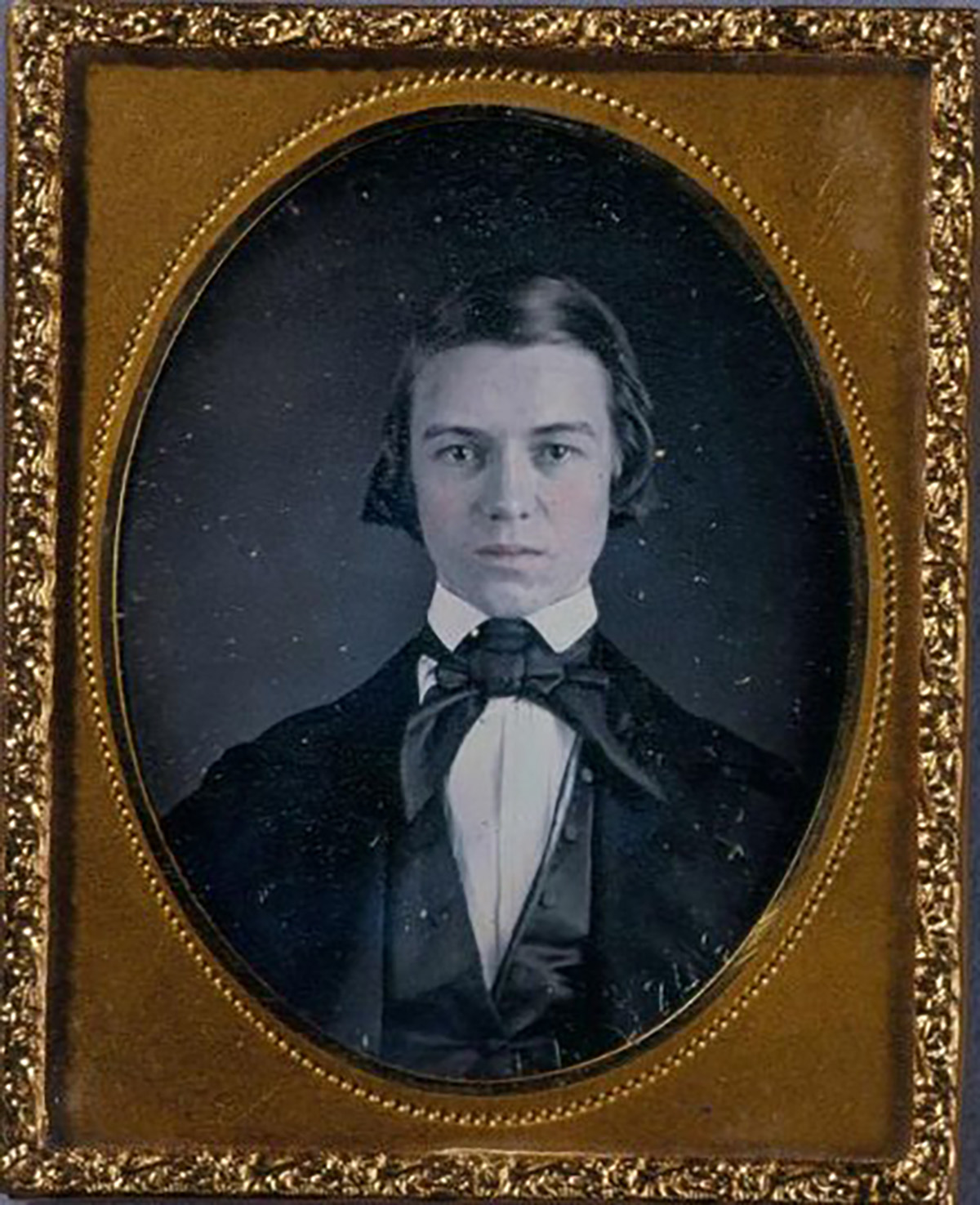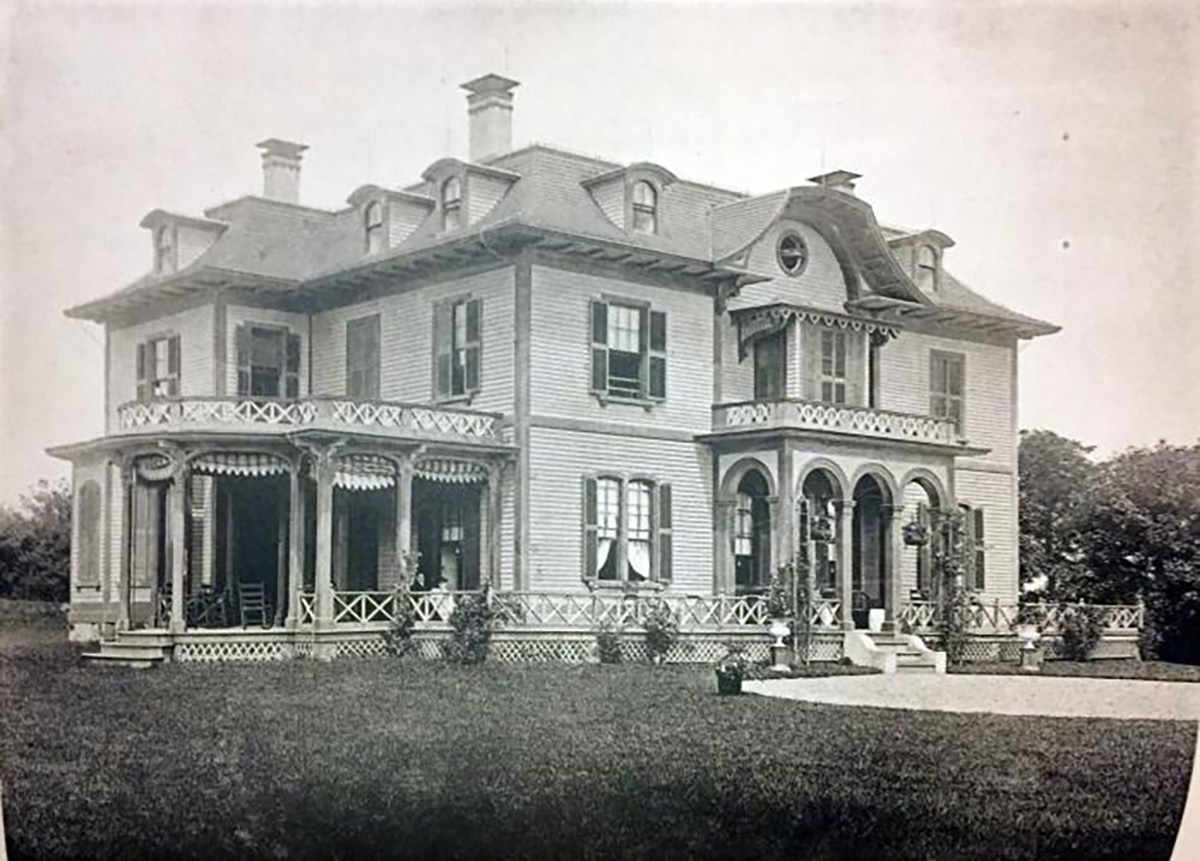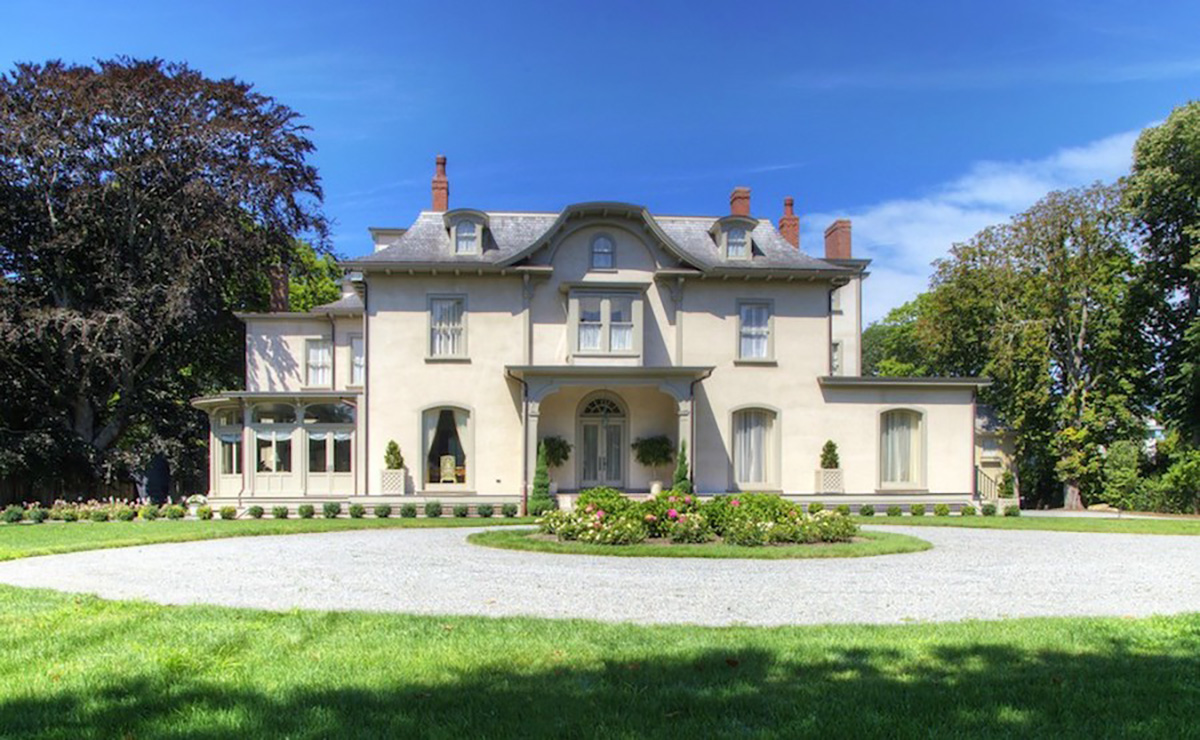Fairbourne House, previously known as “Quatrel”
Over its long history, from its founding in 1639 to the present day, Newport has been a destination for some of the most noteworthy architects in America. Some like Richard Morris Hunt and McKim, Mead, & White had long careers and built dozens of buildings in Newport over their lives.
However, some architects who had great promise did not enjoy the same advantages. One such person is the Rhode Island born architect, Thomas Alexander Tefft (1826-1859). Born in Richmond, Rhode Island, he moved to Providence to work in the office of Tallman & Bucklin, which was one of the few professional firms in the city at the time.

Thomas Alexander Tefft
By 1846 he was having an important impact on the designs of the firm but chose to enroll in Brown University in 1847 to further his architectural education under Professor Alexis Caswell. At this time, he became a strong advocate at the Rundbogenstil (Round Arch style) which was popular in Germany at the time. He graduated in 1851 and opened his own practice.

Providence Union Station
For the next five years, Tefft was extremely productive and prolific with more than 30 buildings listed in his Wikipedia profile. The vast majority of these structures were in Providence, but his services were also utilized by clients as far west as Cannelton, IN and as far south as Richmond, VA.
In 1853 Earl Mason commissioned Tefft to design a grand house for him in Newport on the newly developed Bellevue Avenue. The house was called Fairbourne, and it was built in wood clapboard in a composite of Italianate and Second Empire style reminiscent of the many houses that were being designed at that time by George Champlin Mason (1820-1894) elsewhere in the community.

Original Fairbourne
The design was characterized by round arches and arched dormer roofs, but also a mansard like roof. The house was wrapped in porches with low sitting balusters at both the ground level and second level to provide outdoor areas suited to Newport summer life. It also had shutters on all the windows and hanging awnings to keep the sun out of the house in an era long before air conditioning had been invented.
In late 1856, with the economy faltering and the threat of civil war on the horizon, Tefft decided to travel to Europe to undertake “The Grand Tour” of architecture there. Starting in England he then traveled to Paris, Rome, Geneva, Berlin, and Milan among many other destinations. In late 1859, he fell ill in Florence at the home of sculptor Hiram Powers and died on December 12. He was buried at the English Cemetery in Florence before being moved to Swan Point Cemetery in Rhode Island in 1860.
This was a premature and tragic conclusion of Tefft’s career, and one can only imagine how many more buildings he would have designed had he lived to old age.
Fortunately, his buildings lived on. Fairbourne, for instance, had two major facelifts by Ogden Codman Jr. in 1900. All of the rooms received a layer of Adamesque plaster decoration and new fireplaces. Codman is famous not only for his interior design, but also for his collaboration with Newporter and noted American author Edith Warton called “The Decoration of Houses.” This book has remained in continuous printing since then, which is a remarkable feat.

Current Fairbourne
The story of Fairbourne continued and the house was purchased in 1949 by Lewis and Elaine Lorillard, who were the founders of the Newport Jazz Festival. In a play on their combined initials, the house was renamed Quatrel – Four L’s.
Since that time the house has been owned by many different families and has undergone many different renovations. Yet the basic form of the house and its complimentary carriage house have been maintained. The exterior still has Tefft’s original lines and the interior still reflects Codman’s vision. The most recent purchasers are undertaking the restoration of elements of the design that have been lost over time and are celebrating this return of the house to its roots by returning the name of the house to “Fairbourne,” its original name when it was first designed by Tefft in 1853.
A4 Architecture is pleased to have been engaged by multiple owners to undertake the historically appropriate renovation of this house, outbuildings, and grounds.
Even when an architect passes prematurely, as Thomas Alexander Tefft did, their buildings often live on and continue to evolve over time to reflect the different eras, the different owners, and the different technologies that existed in each of the time periods where the building was used. This is what makes Newport architecture timeless.
Ross Cann, RA, AIA, LEED AP, is an author, historian, and practicing architect living and working in Newport, RI. He holds degrees with honor in Architecture from Yale, Cambridge, and Columbia Universities.
